A U.S. Navy F/A-18E Super Hornet from Strike Fighter Squadron 136, stationed on USS Harry S. Truman, refuelled a British F-35B from HMS Prince of Wales over the North Sea recently.
The operation occurred as part of USS Harry S. Truman Carrier Strike Group’s deployment in the U.S. 6th Fleet area, supporting U.S. Naval Forces Europe-Africa’s regional objectives.
This took place on October 18 and was part of the USS Harry S. Truman Carrier Strike Group’s current deployment in the U.S. 6th Fleet area, supporting U.S. Naval Forces Europe-Africa’s regional missions.These types of joint exercises allow U.S. and UK forces to refine operational coordination and communication across national forces, a priority for NATO.
The refuelling featured the “buddy-buddy” method, where one aircraft refuels another in-flight using an attached external fuel pod. Typically performed between compatible aircraft, buddy-buddy refuelling allows one jet, such as the F/A-18E Super Hornet, to extend the operational range and endurance of another, in this case, the F-35B.
A U.S. Navy F/A-18E Super Hornet from Strike Fighter Squadron 136, stationed on USS Harry S. Truman, refuelled a British F-35B from HMS Prince of Wales over the North Sea recently. pic.twitter.com/M6ixarocd9
— UK Defence Journal (@UKDefJournal) November 1, 2024
This method enables aircraft to conduct longer missions without needing dedicated tanker support, making it especially valuable during extended patrols or operations in remote areas. The technique also increases flexibility and enhances mission capabilities, as allied air forces can quickly refuel each other while airborne, maintaining operational momentum across various mission profiles.
The operation also aligns with the objectives of NATO’s Neptune Strike 24-2, a recent multinational exercise to secure strategic maritime areas across the North, Baltic, and Mediterranean Seas. Activities under Neptune Strike included air-to-ground integration, amphibious landings, and counter-mine operations, enhancing NATO’s collective readiness.
While Neptune Strike has now concluded, ongoing deployments of vessels like USS Harry S. Truman reflect NATO’s commitment to maintaining a strong, coordinated presence in European waters.


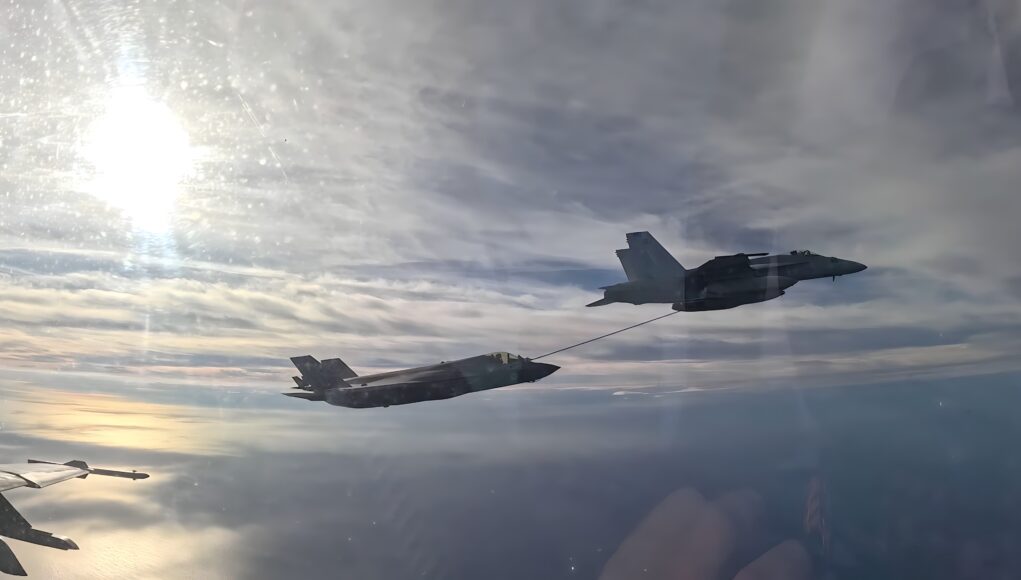

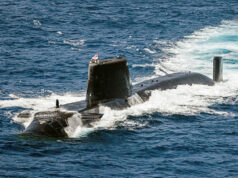

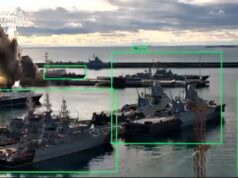
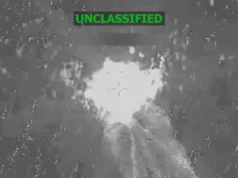

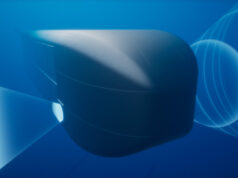
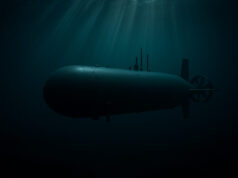



It’s impressive that they can do this and are practicing it, but it’s also just plain stupidity that it actually happens.
Using up the flight hours of a combat Aircraft to refuel another should be an exception not the rule. We lament our lack of certain capabilities that we used to have but the USN is almost as bad. When they ditched the AST-21 advanced F14 they lost long range and became dependant on the Viking for Air to Air refuelling, then they ditched the Viking and resort to this.
If you are short of combat Aircraft you need to maximise their utilisation by providing the enabler of Air to Air refuelling.
Unfortunately due to budget and priorities the introduction of the MQ-25 Stingray is going at a snails place and it may be the 30’s before we see them in operation.
And that may well have been helped by the rather strong Anti Drone message in a certain movie.
Anyone know how project Ark Royal is going ?
The USN’s MQ-25 is a program of record of 71 planes, with delivery of the first 4 production models in 2027 according to the budget. If it’s moving slowly, the program is still moving. Integrating a large drone into an existing air wing is complicated. Unless I’m mistaken it will be the first drone in service aboard a carrier that can do refueling, no one else is moving faster with actual aircraft.
As to the Super Hornet buddy refueling kit, it will be a factor for a while. While it’s less than ideal, it does give a critical capability that is deemed worth of the wear and tear.
I’ve heard arguments that it might be less expensive to just keep ordering Super Hornets for the express purpose of refueling, and definitely easier to deal with than integrating the MQ-25, but that’s academic at this point as the MQ-25 program is already moving forward.
buddy refuelling good to practice, surely not routine, only for surprise extended range missions only.
Buddy pack Protector STOL?
Add to the list of potential roles?
Hardly think they’d be able to carry much fuel. Still doubtful whether they can safely operate off carriers.
At least drag wouldn’t be a issue, but I see your point.
GA really need to hurry up and get a full scale aircraft built. The Mojave demonstration was good but it left too many questions unanswered.
Limited capacity to carry fuel, I think.
The Achilles heel of naval jet ops has always been limited air to air refuelling. The KA 6 & Buccaneer tankers had limited capacity and off courses only a few assigned to a carrier
Point taken re the S3 ,it should have been used as tanker.
I must admit, I had no idea superhornets were capable of doing that, impressive!!
Once upon a time we had RN Buccaneers that could do the same with similar buddy refuelling packs. The USN will start using the MQ-25 Stingray drone for refuelling in the near future while the USMC will use the MV-22 Osprey. We could really use some Ospreys but don’t think we’ll ever be able to afford it.
The RN/RAF could use the earlier test versions(OEU) of F-35B as tankers, by converting the warpon bays, or fuel tanks in bays, like the Buccaneer did?
No chance they’ll let us rip them apart to fit that system. Besides they’d be too heavy to land if they hadn’t expended all their extra fuel.
And before that the Scimitar did tanking…